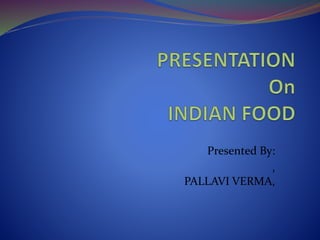Indian food encompasses thousands of regional cuisines that vary significantly based on factors like climate and local ingredients. It is heavily influenced by religious traditions and was also impacted by colonial rule. The key characteristics of Indian cuisine include widespread use of spices and herbs and the practice of vegetarianism. Meals typically include bread, rice, vegetables and dairy. Food is an important part of culture and plays a role in everyday life and festivals. Regional cuisines differ based on geographic location and economics.









































